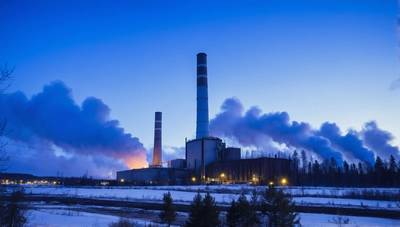Finland's final active coal-fired heat and power plant closes
The last coal-fired heat and power plant in Finland will be permanently shut down on Tuesday. This will allow the Helsinki energy group Helen, which is based in Helsinki, to reduce its emissions, and end rising energy prices for its customers.
The capacity of Finland to produce renewable energy and heat, including wind and solar power, has grown rapidly over the last few years. This has led to a dramatic decline in coal use after the previous government passed a coal ban law in 2019.
Helen CEO Olli Sikka said: "Ofcourse, we can't say that no coal will ever be burned again in Finland, as there are many crisis solutions. But this is Finland's only coal power plant in daily production."
The company stated that Helen would use waste heat, heat pumps, electricity and pellets to replace the 175 MW and 300 MW produced annually by the Salmisaari Plant.
Sirkka stated that "in the long-term, we intend to eradicate all burning." The company's goal is to reduce its emissions to 5% below 1990 levels by 2030, and eliminate all combustion by 2040.
Sirkka stated that Helen, owned by Helsinki, was the last Finnish energy producer to stop using coke because there were not enough clean alternatives to meet the needs of the city.
He said that on cold winter days, Helsinki alone consumes 20% of the total electricity produced in the country.
It is important to acknowledge that a clean changeover does not come inexpensively. "It is a choice of values that Helen and I have made as a community." he said.
Helen, he said, expects that the average district heating price will decrease by 5,8% for customers in the average this year.
It said that the shutdown would allow Helen to cut its carbon dioxide emissions from last year by half and Finland's overall emissions by almost 2%.
Beyond Fossil Fuels, an environmental campaign group, pointed out that Finland had "nearly" eliminated coal from its energy mix. However, two small plants in other parts of Finland continue to use coal as part of their production and a third plant is still in strategic reserve for emergency situations or consumption spikes. (Reporting from Anne Kauranen, Helsinki; editing by Hugh Lawson).
(source: Reuters)








